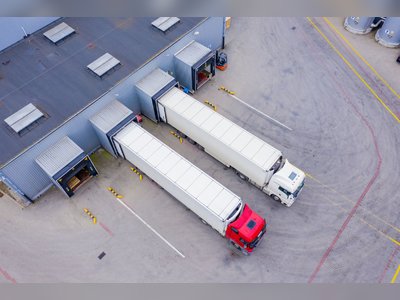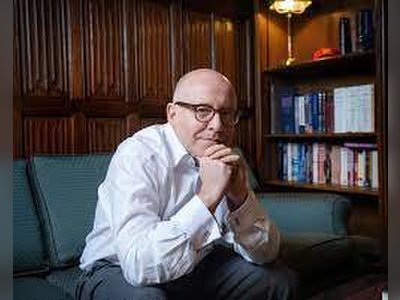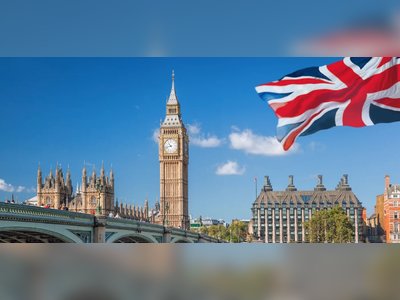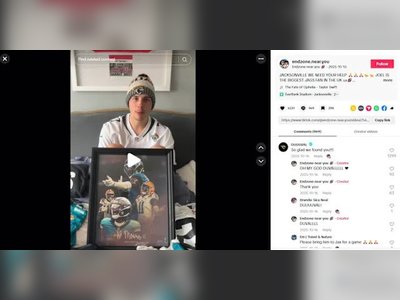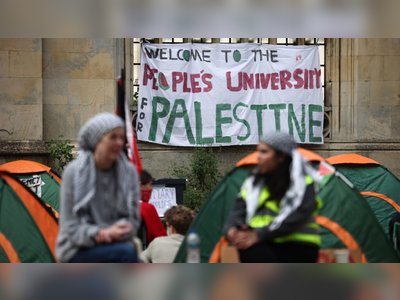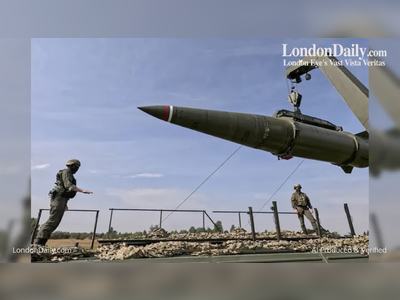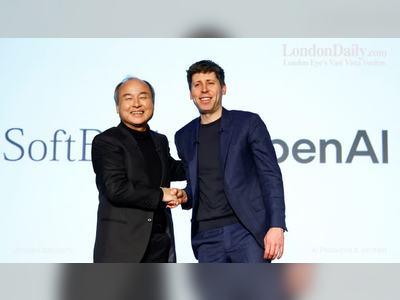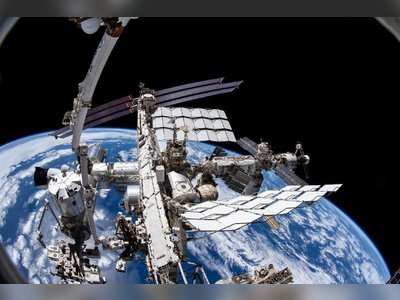
The best way to brush your teeth
For a routine most of us have been practising since before we were tall enough to see into the bathroom mirror, we are remarkably bad at brushing our teeth.
In Sweden, one study found as few as one in 10 people practice the best brushing technique. The British health insurer Bupa found that almost half of respondents did not know how to brush their teeth properly in a survey of 2,000 people in the UK.
"It is very likely that anyone who has not had formal instructions from their dentist or hygienist brushes incorrectly," says Josefine Hirschfeld, academic clinical lecturer in restorative dentistry at the University of Birmingham in the UK. "From my experience, this will be the vast majority of the population in any country."
Perhaps that is not surprising, given the bamboozling variety of information available on how you should brush your teeth. One study found at least 66 differing, sometimes conflicting, pieces of expert advice.
"I think it's very confusing for the consumer," says Nigel Carter, chief executive of the Oral Health Foundation in the UK. This confusion is amplified by the dazzling array of dental products available to buy, from tongue-scrapers to interdental waterjets.
So what exactly are most of us getting wrong, and how can we change our routine to make sure we brush our teeth effectively? (Read more about how this might reduce the dangers of hidden deep gum disease in part one of this two-part story)
What's the best method?
"Lots of patients understand that what they need to do is remove food remnants," says Hirschfeld. "That is only partially true. It's much more important to remove bacteria from the teeth."
Think of brushing your gumline, rather than the teeth themselves. The teeth will then be brushed automatically – Josefine Hirschfeld
These bacteria and other microorganisms grow inside everyone's mouth, and form a claggy biofilm commonly known as dental plaque. It is made up of around 700 different species of bacteria, the second-greatest diversity in the human body after the gut, as well as a host of fungi and viruses. "They are living in the sticky film stuck to the teeth and also to the soft tissues," says Hirschfeld. "This sticky film can't be easily rinsed off – it really needs to be manually cleaned."
The most important place to remove it from is not in fact the teeth, but the gumline. This is where microbes are best able to infiltrate the gum tissue and cause inflammation, and eventually conditions such as periodontitis. In fact, "brushing your teeth" is something of a misnomer. "Think of brushing your gumline, rather than the teeth themselves," says Hirschfeld. "The teeth will then be brushed automatically."
So what exactly is the best way to do this?
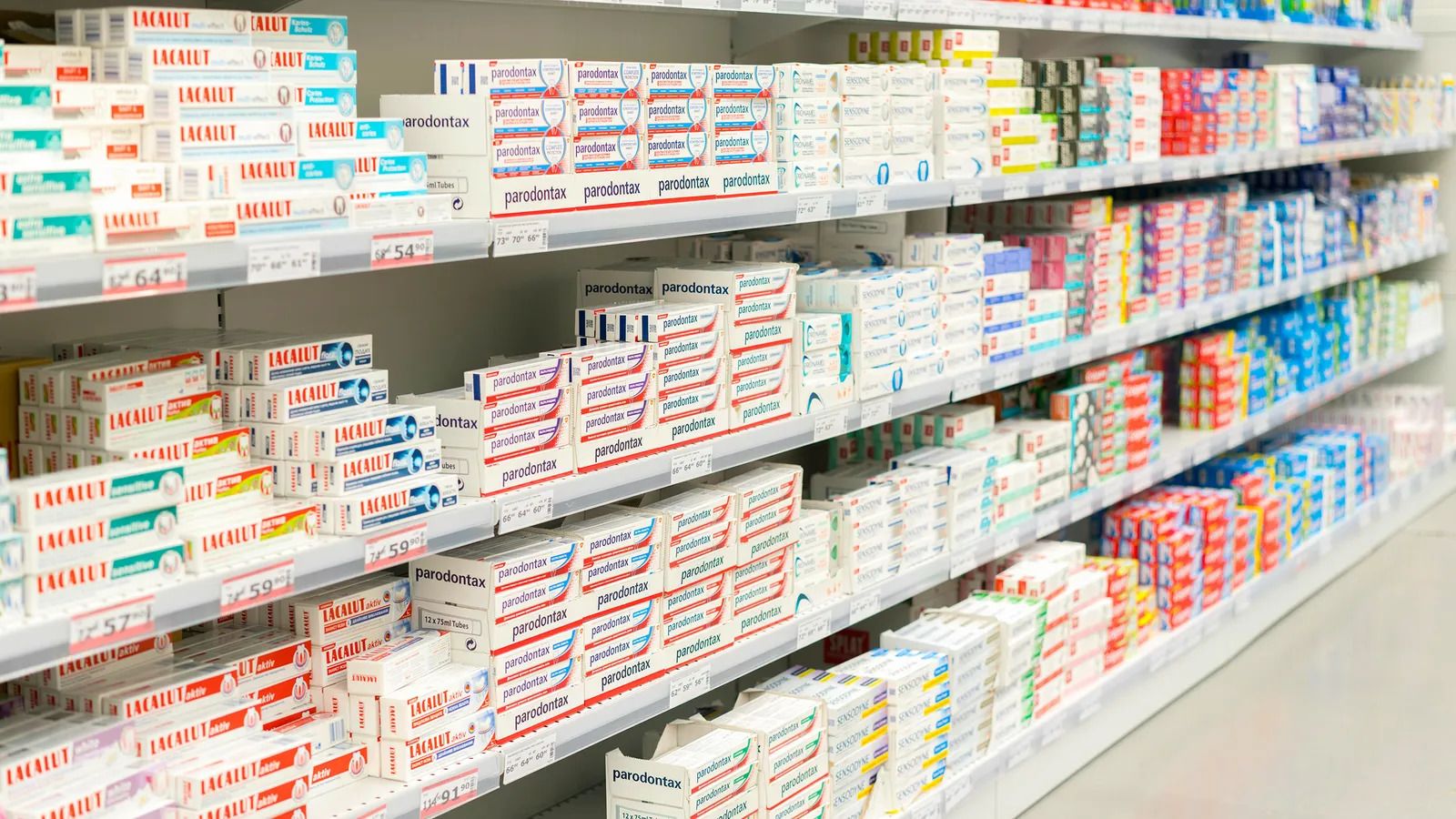 The sheer variety of dental products available can be a source of confusion for consumers
The sheer variety of dental products available can be a source of confusion for consumers
One of the most effective ways to clear the biofilm is known as "the modified Bass technique". This requires considerably more manual dexterity than the vague put-the-brush-in-your-mouth-and-look-busy method that many of us use, as I soon find out.
In my bathroom, armed with my bamboo-handled, Nylon-bristled manual toothbrush, I prepare to attempt the modified Bass. Stuck to the mirror is my new miniature hourglass that times two minutes (more on that later). I turn it over, and begin.
The modified Bass technique involves placing the brush at a 45-degree angle to the tooth face (tilted down for the lower jaw and upwards for the upper, as if you are trying almost to edge the bristles below the gums). You then make small, vibratory movements back and forth at the gumline. After closely studying several videos, I give it a go.
A few moments later, my mirror is sprayed with white flecks of toothpaste and my brush is on the floor. In my enthusiasm I have somehow fumbled the brush, scraped the hard bamboo head across my gums and dropped it.
Undeterred, I give my toothbrush a brisk wash and try again, this time more tentatively. The small, brisk-but-gentle movements that Hirschfeld carefully described to me are surprisingly difficult to emulate. As a right-hander, it feels something like attempting to write in neat cursive script with my left. By the time I've painstakingly negotiated my entire gumline – upper, lower, inside and out – with an attempt at the modified Bass, I check my little green hourglass. My two minutes are up, who knows how long ago, and I haven't even started flossing yet.
There are other techniques besides the modified Bass that do a good job of removing the biofilm. On another occasion, I try out the modified Stillman – similar to the modified Bass, with the addition of an occasional pleasing sweeping motion away from the gumline, during which I envisage a biofilm of microbial gunk being swept into a foamy oblivion.
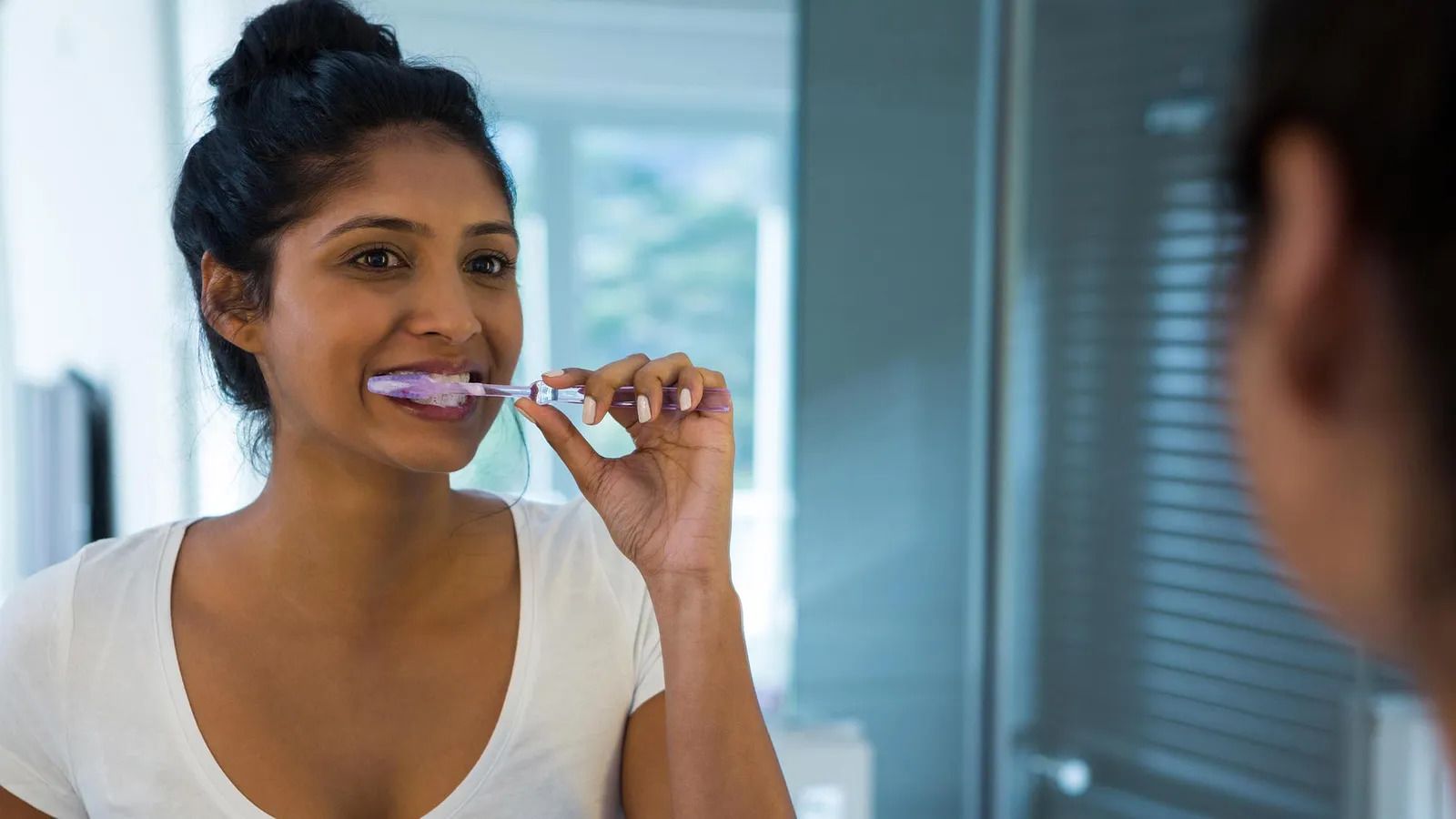 Some of the best-evidenced methods for removing the biofilm of microbes from your teeth are rarely practiced
Some of the best-evidenced methods for removing the biofilm of microbes from your teeth are rarely practiced
After a week of experimentation, and dwindling flecks of toothpaste on the mirror as I feel I'm getting the hang of it, my gums start to feel a little sore. It turns out that in my enthusiasm, I've been applying too much pressure.
The pressure applied should be no more than 150-400g, says Hirschfeld, though the optimal pressure is still up for debate. Brushing too hard, especially with a firmer-bristled brush, can cause trauma to the gums. Small tears in the soft tissue caused by overzealous brushing are an opportunity for bacteria to enter the bloodstream. And grating the brush's bristles over the enamel can wear miniscule grooves in the tooth, which add up to significant erosion over time. People who use a manual toothbrush often press harder than those who use an electric brush, many of which have sensors to warn when the pressure is too great.
For a few days, I try a different technique, intended for children and people with less manual dexterity. The Fones method involves holding the brush at 90 degrees and making circular motions over the teeth, skimming the gumline. It's certainly easier to do while I experiment with getting the pressure about right. But I resolve to master the modified Bass once my gums have recovered from my eagerness.
"The modified Bass technique is one of the best ones. It cleans the teeth in the best possible way, without causing trauma to the teeth and gums," says Hirschfeld.
But the Oral Health Foundation's Nigel Carter notes, reassuringly, that getting the textbook version right isn't always what matters. "What dentists and hygienists generally recommend these days is to look at what the person is doing, and make modifications to their existing technique to improve," he says.
How long?
Brushing for at least two minutes at a time, twice daily is the recommendation from the American Dental Association, the NHS, the Indian Dental Association, the Australian Dental Association, and many other national health organisations.
The trouble is, most of us are bad at estimating how long two minutes really is. The average duration that we actually brush for varies widely, from 33 seconds, 45 seconds, 46 seconds, to 97 seconds, according to different studies. Only around 25% of people brush their teeth for long enough, with the correct pressure and motion, according to one study led by Carolina Ganss, a professor in the department for conservative and preventive dentistry at Justus-Liebig University Giessen in Germany.
Fortunately, there are easy solutions such as using an app your phone, a miniature hourglass stuck to the bathroom wall (as I chose) or an electric toothbrush that has an inbuilt timer.
 Unless you have had formal instruction from a trained dental
professional, the likelihood is you won't have optimal brushing
technique
Unless you have had formal instruction from a trained dental
professional, the likelihood is you won't have optimal brushing
technique
In general, the longer the time spent brushing, the greater the quantity of biofilm removed, says Carter, but it is thought that around two minutes is about the length of time needed to get around all the surfaces of the teeth and gum line. For people who have gum disease or other oral health conditions, though, it might take longer to ensure the biofilm has been thoroughly dislodged.
"In fact, the optimal brushing time is highly dependent on the individual situation," says Hirschfeld. "It's not really defined, and it cannot be defined, because every person's dental and oral situation is different. What matters is that all teeth are cleaned all the surfaces of each tooth also including difficult to reach areas – and that can easily take a lot longer than two minutes."
How often?
The advice in countries such as the US, the UK and Australia is to perform your carefully timed, diligently executed brushing technique twice a day. The Indian Dental Association, however, advises up to three times (including an after-lunch brush) can be beneficial. For most people with no major oral health issues, there's no benefit to going over and above this guidance.
"More is not necessary to remove bacteria from the teeth and it might actually be harmful to brush more often than twice a day", as excessive brushing risks abrasion to the tooth, says Hirschfeld. Though again there are exceptions. "If you think of people wearing braces where foods get really easily trapped, those patients are commonly advice to brush after each meal," she adds.
Brushing twice also helps hedge against imperfect technique. "Strictly if you brushed perfectly once a day would probably be enough, because it's the older plaque on your teeth that actually causes the problems for both tooth decay and gum disease," says Carter. "But none of us do 100%. So the idea is that by doing it twice you're getting the bits that you missed before, so each day you'll be cleaning everything."
Before or after food?
Is it better to brush your teeth before or after breakfast? From toothpaste manufacturers to dental hospitals, many advocate that it is better to brush your teeth before breakfast than afterwards. But this is still an area of debate.
"There is no specific strong recommendation," says Hirschfeld. "But lots of dentists will recommend brushing afterwards, because not only will they remove the plaque but also food remnants from the breakfast."
Whether before or after breakfast would work better for you depends on what you eat and when. This is because there need to be two things for a biofilm to develop: microbes, and food for them to eat.
"Without bacteria or without food, you cannot develop cavities," says Hirschfeld. "If you brush the bacteria away really thoroughly before breakfast, then in theory it shouldn't matter how much sugar you eat. If there are no bacteria that can ferment it, then it's fine." But removing 100% of the biofilm in a single brushing session before breakfast is by no means assured, especially given most people's questionable brushing habits.
Equally, brushing after breakfast can be effective. "If you do have the sugars on top of the existing bacteria and then you brush them away, that should be equally fine," says Hirschfeld.
One of the main drawbacks of brushing after breakfast, however, is that you need to leave a good gap between eating and brushing – the American Dental Association recommends waiting 60 minutes. The reason is that acids in food, and in the by-products of microbes' digestion of carbohydrates, temporarily make the teeth vulnerable.
"Acids attack the enamel layer of the teeth and soften it for a certain amount of time," says Hirschfeld. This strips out some of the key components of the enamel – calcium and phosphate – though these are replaced over a period of hours by minerals in the saliva. "So the process is self-repairing. But if you don't wait for that self-repair to happen, then this eroded surface will become very susceptible to just being brushed off."
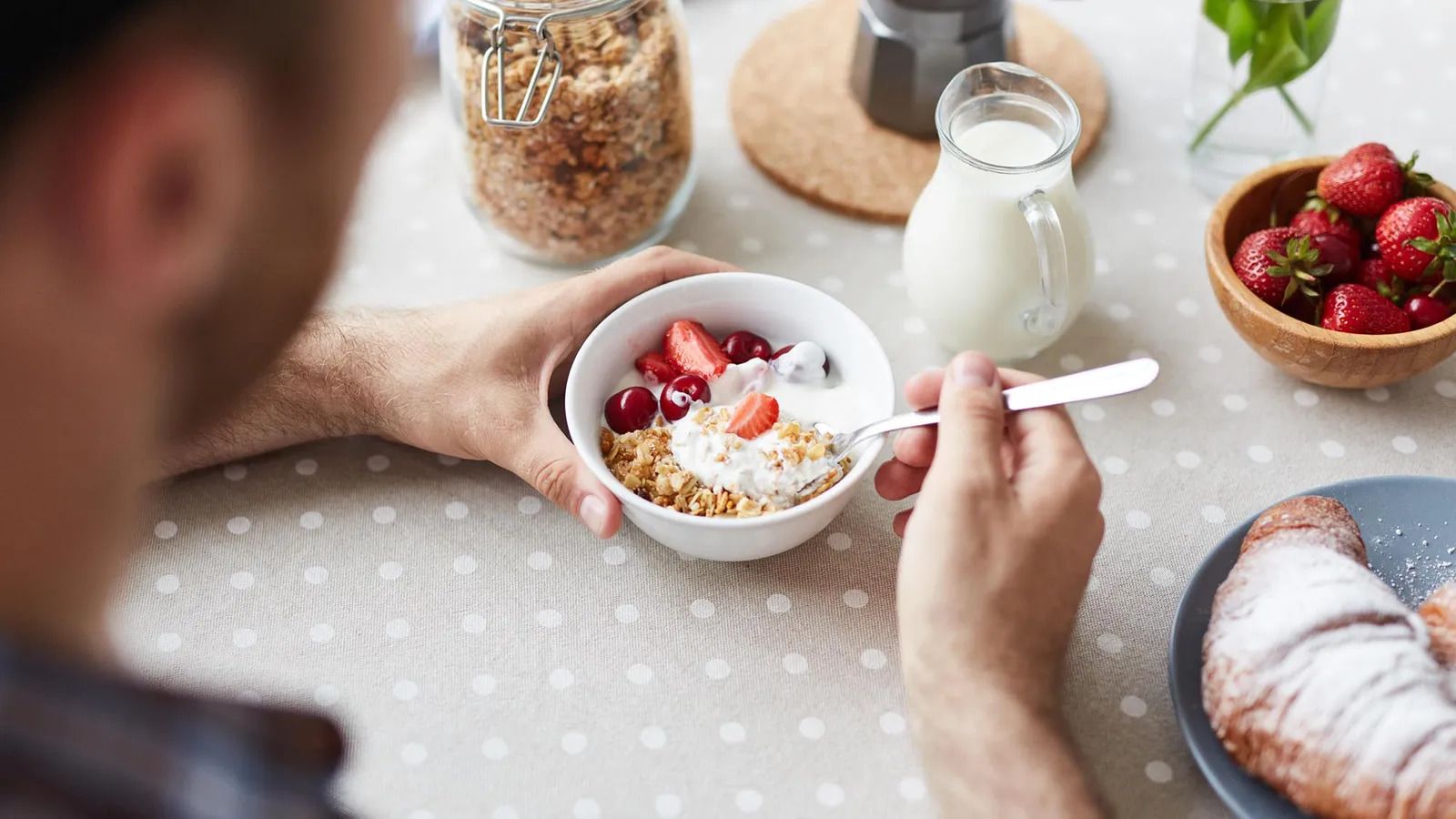 Whether it's best to brush before or after breakfast depends on the
foods you're eating - and how long you can wait afterwards before
brushing
Whether it's best to brush before or after breakfast depends on the
foods you're eating - and how long you can wait afterwards before
brushing
Carter agrees that the before-or-after-breakfast question is nuanced, and depends on what you've had to eat. Acidic food and drink – such as citrus fruit, fruit juice and coffee – would be a reason to brush before rather than after breakfast, so you don't have to worry about interrupting the remineralisation process.
More important than the breakfast question is the evening brush, which also has a simpler answer: it should always happen last thing before bed.
"Your saliva is your natural protective mechanism," says Carter, inhibiting bacterial growth and tooth decay. "The saliva flow reduces overnight, so that's why it's very important that all the plaque is cleared away before you sleep."
What should you clean your teeth with?
There are some toothbrushes and toothpastes on the market that will literally "brush the teeth away", says Hirschfeld. Highly abrasive toothpastes, which are often marked as "whitening", and hard-bristled brushes are notorious for this, particularly when used together.
"It is a very slow process it happens over years or decades," she says. "But over time, the teeth get abraded and can then be very sensitive to temperatures or to developing cavities."
Medium-bristled brushes are best for adults, and a toothpaste that doesn't contain small abrasive particles. A smaller brush head – allowing for more manoeuvrability around individual teeth – is also preferable, says Hirschfeld, as is making sure you replace a worn brush before its bristles become too misshapen.
Traditional toothbrushes or chewing-sticks such as the miswak from the toothbrush tree, widely used across Africa, the Middle East and South Asia, are also effective in removing plaque and preventing cavities. But they come with a higher risk of abrasion to gums if they aren't used correctly. (See Nature's toothbrush box).
Even more effective than manual options, though also more expensive, is the electric toothbrush. After years of studies showing no significant difference between the two, a number of meta-analyses have found moderate levels of evidence that electric toothbrushes are more effective in removing plaque. (The authors of these meta-analyses note that they have received funding in the past from the manufacturers of electric toothbrushes.)
Part of the reason is the vibratory motion is automatic and relies on less manual dexterity, but another factor is the size of the heads. Many also have pressure sensors that light up when the user is pressing too hard, risking enamel damage. "But if you use a manual toothbrush and use it absolutely correctly in terms of brushing method and pressure and so on, then you will get an equally good result," says Hirschfeld.
Should you floss?
Despite occasional controversies about the paucity of research on flossing, many dental health organisations remain staunch proponents of the practice.
"If you think of each as a cube where five surfaces are exposed to the oral environment, all of these areas have biofilms growing on them, and there is really no reason why to leave out to half of them," says Hirschfeld.
In the UK, Carter estimates that a very small proportion – perhaps one in 20 people – habitually use floss. A survey in 2019 found that one-third of UK adults had never used floss at all.
 The miswak, from trees such as Salvadora persica, have been used for millennia to help keep teeth clean
The miswak, from trees such as Salvadora persica, have been used for millennia to help keep teeth clean
Floss is not the only way to get rid of the biofilm between teeth. The characteristics of your teeth – crowded or widely spaced, for instance – will determine what will work best, a small brush or a thin piece of floss. For those who have gum or teeth problems, interdental cleaning is an opportunity to go all-out. "Lots of our patients use a wide variety of interdental cleaning devices, so they have maybe five or six different brushes of different sizes, floss and other brushes," says Hirschfeld. The time spent flossing should be considered part of your two-minute clean, she adds, and there's no need to do it more than once a day.
This is despite one review of randomised controlled trials (RCTs) in 2011 claiming there was only "weak, very unreliable evidence which suggests that flossing plus toothbrushing may be associated with a small reduction in plaque at one or three months", and most studies had methodological flaws. However, that review was later withdrawn, after objections that the "absence of evidence is not the evidence of absence". A later, updated version found that flossing was significantly better than brushing alone at reducing gingivitis (superficial gum disease, which can lead later to deep gum disease, or periodontitis), though the evidence that it reduced plaque was still "weak" and "very unreliable".
"It is really hard to conduct these types of studies," says Hirschfeld. It's difficult to get a large enough cohort, reflective of the general population and not simply dental students who are easy to recruit to such studies, and to get around factors such as the unreliability of self-reporting. Another major challenge is carrying out the studies long enough to see how the incidence of teeth and gum problems is altered, which can take decades. "That is hard, if not impossible, to do. That's why the evidence is weak."
What kind of toothpaste is best?
While there is a plethora of different toothpastes, from cavity-prevention to whitening to sensitivity-reduction, expensive brands aren't necessary to do the essentials, Hirschfeld and Carter agree.
"I've looked at the ingredient list of some of the really cheap toothpastes that I've seen, as cheap as 40p on occasion, and I don't see anything wrong with them," says Hirschfeld.
Of the long list of ingredients on the back of an average packet of toothpaste, there is one ingredient in particular to look out for: "Fluoride content," says Hirschfeld. "That is definitely the key factor." It should be around at least 1,350 parts per million (ppm) for adults, and 1,000 ppm for children to protect the enamel from acids.
Tooth enamel is the hardest tissue in the human body, and one of the hardest found in nature. "Almost as hard as diamond," notes Hirschfeld. It is mostly made up of a mineral called hydroxyapatite (a kind of calcium phosphate) arranged in a complex crystalline structure, which varies in different forms and arrangements throughout the tooth to increase hardness and durability.
But despite its resilience to mechanical force, enamel is easily dissolved in acid. The microbes present in the biofilm release lactic acid as a by-product from digesting the sugars and carbohydrates that can become trapped between our teeth. This lactic acid gradually leaches calcium and phosphate from the enamel, which eventually begins to crumble and forms a cavity.
Compounds naturally present in the saliva can go some way to replacing the lost minerals. In particular, if fluoride is present (as it naturally is in soils and water in many parts of the world), then the enamel reforms as fluorapatite, which is more resistant to acids than hydroxyapatite. Spitting out toothpaste when you're finished but refraining from rinsing helps the fluoride to hang around the teeth longer, for additional protection.
"Since fluorides have been introduced into toothpaste, the incidence of cavities has gone down everywhere where fluoridated toothpaste is used," says Hirschfeld.
However, some fashionable ingredients should be treated with caution. Charcoal, which has been used to clean teeth for millennia and has become increasingly popular in commercial toothpastes, has less research to back it up. There is little evidence charcoal whitens teeth, and it may increase the risk of tooth erosion and other problems. Claims regarding antibacterial, antifungal and antiviral properties of charcoal toothpastes cannot be substantiated, according to one review, concluding dentists should "advise their patients to be cautious when using charcoal and charcoal-based [dental products] with unproven claims of efficacy and safety".
Many charcoal toothpastes don't contain fluoride, and therefore offer less protection from cavities. However, if someone uses a toothpaste with no added fluoride, they will still get some benefit from brushing their teeth. "They can still get the mechanical plaque removal," says Carter. "But they're not going to get the decay-prevention benefit, which is essentially what fluoride in toothpaste does."
Some other popular additives in toothpaste may be less controversial. Toothpastes containing baking soda (small crystals of sodium bicarbonate) have been found to remove plaque better than those without, according to the authors of one meta-analysis, though they noted more follow-up studies were needed (the authors of that study stated that they had received funds from toothbrush and toothpaste manufacturers in the past). The same analysis found that baking-soda toothpastes may give a slight reduction in bleeding due to gingivitis.
Should you use mouthwash?
Mouthwash is less effective than teeth-brushing at removing plaque, says Carter, but when combined the two can remove a little more plaque than brushing alone. "I would say that it's a very useful additional element, not to replace tooth brushing but as an addition."
It can, however, be useful for treating gingivitis, according to one recent consensus statement. To be useful, it should contain at least 100ppm fluoride and be clinically proven to reduce plaque. And it is best to use it only if your gums are already bleeding, rather than as a preventative measure.
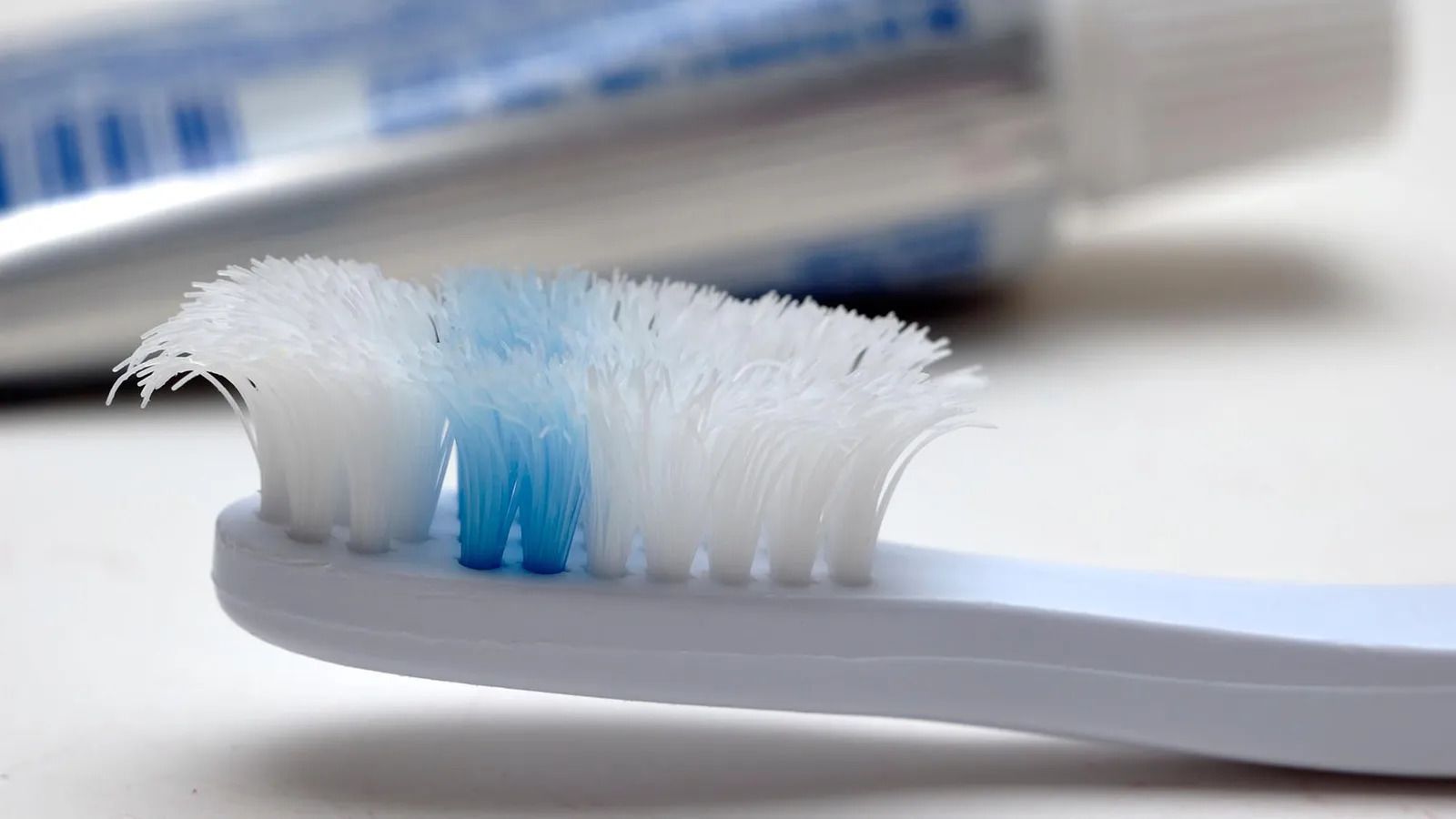 An old, over-worn toothbrush doesn't clean the teeth as effectively
An old, over-worn toothbrush doesn't clean the teeth as effectively
For want of a better term, there is, perhaps, a "sweet spot" for brushing your teeth effectively. Not enough brushing, and the biofilm builds up and risks cavities and periodontitis. Too much, or too hard, and the enamel is easily brushed away over time. Though getting the ideal routine – with floss or interdental brushes, and perhaps mouthwash if you have gingivitis – might be fiddly, it's more than worth it for the payoff in overall health.
As explored in part one of this series of articles, effective brushing is emerging as an impactful way of lowering our risk of not just bad breath, yellow teeth and cavities, but developing conditions such as type 2 diabetes, cardiovascular disease and cognitive decline.
"Increasing evidence suggests that one pathway linking periodontal disease and cognitive impairment is through inflammation," says Bei Wu, dean's professor in global health at New York University's Rory Meyers College of Nursing. "Good oral hygiene behaviours, such as brushing teeth effectively can reduce dental plaque and reduce the risk of gum inflammation."
With that for motivation, my now burgeoning collection of brushes, interdental devices, floss and a new bathroom timer don't seem so excessive after all.
